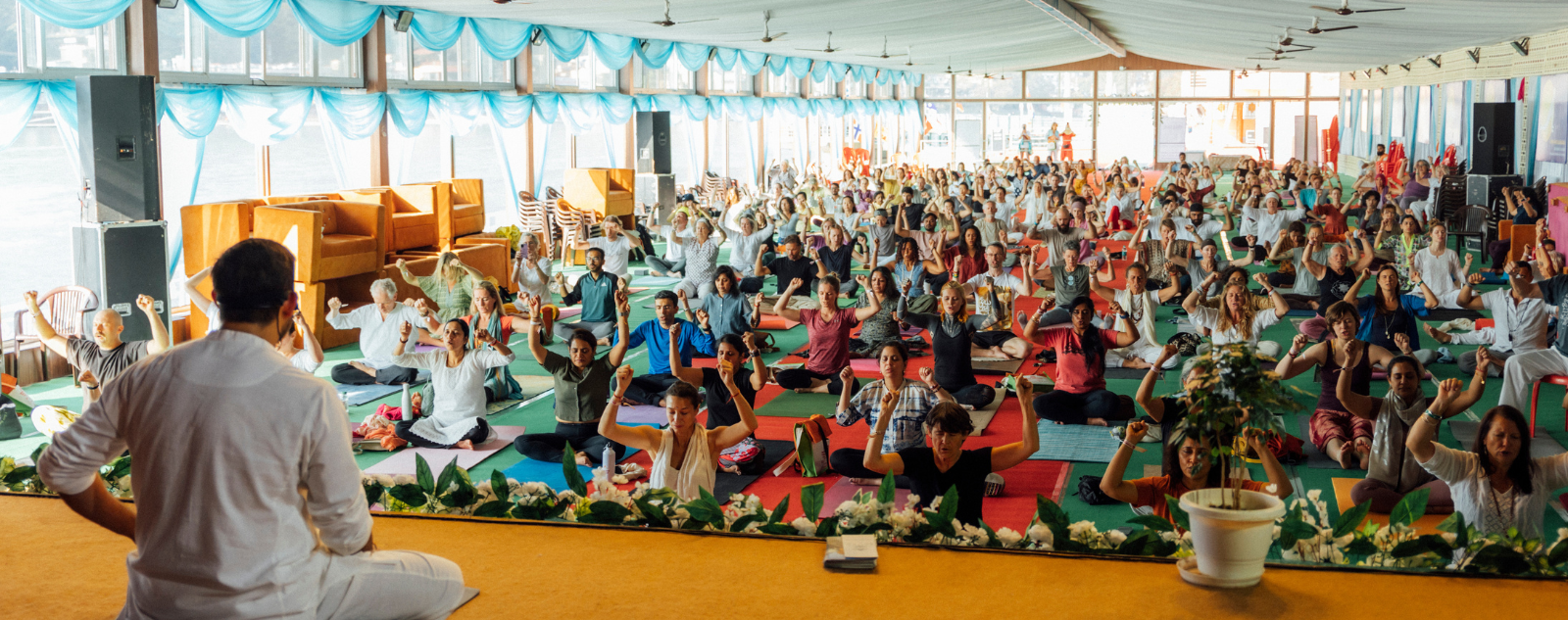Blogs
Living Ethically: The Forgotten Yamas & Niyamas of Modern Yoga

In yoga, the emphasis often leans heavily on asanas, the physical postures, sometimes overshadowing the profound ethical framework that forms the very foundation of authentic yogic discipline. This framework is embodied in the yamas and niyamas, the first two limbs of the eightfold path of yoga as outlined in the Yoga Sutras of Patanjali. To truly embrace ethical living yoga and overcome the modern yoga flaws that reduce yoga to mere physical exercise, revisiting and integrating the yamas and niyamas explained is essential.
Understanding Yamas and Niyamas Explained: The Ethical Bedrock of Yoga
The yamas and niyamas explained represent a set of ten ethical guidelines that govern how we relate to the world and ourselves. The yamas are five restraints or lifestyle changes that focus on our interactions with others and the external environment, while the niyamas are five observances that cultivate inner discipline and personal growth.
The Five Yamas: Ethical Principles Toward Others
- Ahimsa (Non-violence): This principle advocates for harmlessness in thought, word, and deed, fostering compassion and respect for all living beings. Practicing ahimsa reduces personal anxiety and promotes peace, which is crucial for a balanced yoga practice.
- Satya (Truthfulness): More than just honesty, satya calls for authenticity in speech and action, aligning one’s external expressions with inner truth. This integrity builds trust and credibility in relationships and encourages listening to the body’s limits during practice.
- Asteya (Non-stealing): Beyond refraining from theft, asteya encourages not taking what is not freely given, including time, energy, and ideas, cultivating generosity and gratitude.
- Brahmacharya (Moderation or Control of the Senses): Often interpreted as moderation in sensory pleasures, brahmacharya guides the practitioner to direct energy toward higher spiritual goals.
- Aparigraha (Non-possessiveness): This yama promotes detachment from material possessions and the desire to accumulate, encouraging simplicity and contentment.
The Five Niyamas: Personal Disciplines for Inner Harmony
- Shaucha (Purity): Purity involves cleanliness of body, mind, and environment, fostering clarity and health.
- Santosha (Contentment): Practicing gratitude and acceptance of circumstances cultivates inner peace.
- Tapas (Discipline or Effort): Tapas is the commitment to self-discipline and perseverance, essential for overcoming obstacles on the yogic path.
- Svadhyaya (Self-study): This involves introspection and study of spiritual texts, deepening self-knowledge.
- Ishvarapranidhana (Surrender to the Divine): Surrendering the fruits of actions to a higher power nurtures trust and spiritual connection.
Together, these yamas and niyamas explained form the ethical and personal foundation of yogic discipline, guiding practitioners toward self-realization and harmonious living.
The Forgotten Foundation: Why Modern Yoga Flaws Undermine Ethical Living Yoga
Modern yoga, especially in the West, often emphasizes physical fitness, flexibility, and stress relief, sometimes neglecting the essential ethical dimensions. This trend reflects a significant flaw in modern yoga: the sidelining of the yamas and niyamas explained, which are the very gateway to authentic yogic transformation.
Anand Mehrotra, a Himalayan Yoga Master and founder of Sattva Yoga, highlights that yoga is not merely a set of postures but a profound spiritual journey rooted in ancient Himalayan wisdom. The essence of yoga lies in integrating these ethical principles into daily life, which modern yoga frequently overlooks.
The analogy of preparing sambar without the foundational dal illustrates this well: no matter how refined the external ingredients (the asanas and physical practices), without the foundational yamas and niyamas, the practice lacks substance and authenticity.
Reclaiming Yogic Discipline: Integrating Yamas and Niyamas into Modern Life
To counteract modern yoga flaws and embrace ethical living yoga, practitioners must consciously integrate the yamas and niyamas explained into their daily routines. This integration transforms yoga from a physical regimen into a holistic lifestyle and spiritual discipline.
Practical Steps for Ethical Living Yoga
- Set Daily Intentions: Begin each day by consciously setting intentions aligned with the yamas and niyamas. For example, practicing ahimsa by choosing kindness in interactions or santosha by appreciating present circumstances.
- Mindfulness and Reflection: Employ meditation, journaling, or mindful walking to cultivate awareness of how well one embodies these principles throughout the day.
- Gradual Integration: Focus on one yama or niyama at a time to build sustainable habits without feeling overwhelmed.
- Community Support: Engage with like-minded practitioners or spiritual communities, such as those offered through Sattva Connect, to gain encouragement and deepen understanding.
- Education and Personalization: Continuously study the deeper meanings behind each yama and niyama and adapt their practice to fit personal and cultural contexts.
Overcoming Challenges
Practicing the yamas and niyamas consistently can be challenging due to societal norms, personal habits, and external pressures. However, with patience, self-awareness, and support, these obstacles can be navigated. Recognizing that these principles are not rigid rules but guiding lights helps practitioners maintain compassion toward themselves and others during this journey.
The Transformative Power of Yamas and Niyamas Explained
Living ethically through the yamas and niyamas explained is not about perfection but about cultivating a life aligned with truth, compassion, and self-awareness. This ethical foundation supports the other limbs of yoga – posture, breath control, concentration, and meditation, enabling practitioners to experience yoga as a path to spiritual awakening rather than mere physical exercise.
Anand Mehrotra’s teachings emphasize that embracing these forgotten yamas and niyamas reconnects us with the original essence of yoga, fostering a great awakening of consciousness that humanity deeply yearns for today.
Conclusion
The yamas and niyamas explained are the cornerstone of yogic discipline and ethical living yoga. Modern yoga’s focus on physical postures has led to neglecting these vital principles, resulting in a diluted practice that misses yoga’s transformative potential. By revisiting and embodying the yamas and niyamas, practitioners can restore yoga’s true essence, cultivating a life of harmony, integrity, and spiritual depth.
In the spirit of Anand Mehrotra’s Himalayan tradition, let us remember that yoga is a holistic journey, one that begins with ethical living and unfolds into profound self-realization. The forgotten yamas and niyamas are not relics of the past but timeless guides for anyone seeking a meaningful and awakened life.
